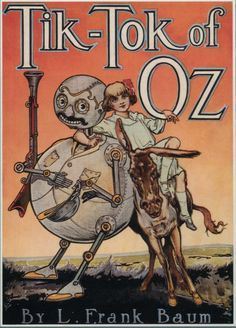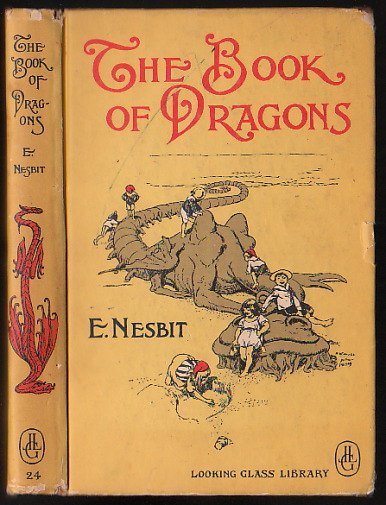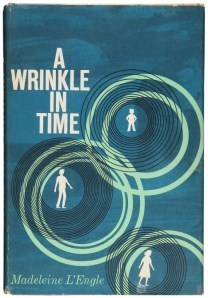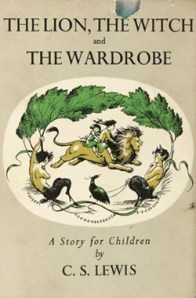The Architects of our Imaginations

Yesterday was Ursula K. Le Guin’s birthday – one of my favorite writers, thinkers and storytellers. I started the day reading an an essay she wrote called “Introducing Myself”, which later sent me exploring the landscape of my brain in which Earthsea and Ged and Arha and Kalessin still hold sway. It is like this with books, I think. They build structures, cities, regions, and cosmologies. They do not just bend space and time – they create space and time, within us. And those places remain forever. So I wrote this tweet:
I don't think I would be the writer that I am had I not read Le Guin as a child. Some writers are the architects of our imaginations.
— Killer BarnOwl (@kellybarnhill) October 21, 2014
Which got me thinking. What are the books that helped to build my brain? Who are the writers who engineered and designed the different regions of my imagination – imprinting the space from which my own stories are born?
I know for sure that I owe my fascination with landforms and geography to the writings of Le Guin and Tolkien. I’m a nature girl as a matter of course, and have even composed whole sections of my novel while camping in the wilderness with my family (six chapters of The Witch’s Boy, for example, were penned on a lake-dampened notebook while sitting cross legged on a boulder jutting out of Flame Lake in the Boundary Waters Canoe Area Wilderness – a million acre wilderness area that stretches across northern Minnesota and Canada.

To L. Frank Baum and his unsettling weirdness, however, I owe my penchant for the Strange, the Odd-Ball, the Disarmingly Creepy, and the Whimsically Grotesque. It was in these pages that I fell in love with vegetable people (who, if you sliced them in half, you just planted them, and they grew new versions of themselves), and gender-swapping hero/heroines, and animated sofa-beasts, and bulbous bellied clockwork men. I grew to love enormous, well-dressed insects and girls made of patchwork and girls made of rainbows and creatures with wheels instead of hands and an army of girls armed with knitting needles. I sometimes have to reign in my fascination for the weird and creepy – not every reader loves the Weird the way I love the Weird – but there is no doubt it seeps into the ground of my stories’ making, even now.

To E. Nesbit, I owe my focus on familial relationships and the nuance of siblingry. C.S. Lewis does this too, of course, but I always found Nesbit’s families and sibling interplay to be far more believable. Family -in all its tensions, feints, and layers of meaning – is its own wild adventure. We’re all lucky we make it out alive. I, myself, was from a large family – four sisters and a brother, plus innumerable cousins and second cousins – and the loyalty and frustration of sibling-hood in Nesbit’s books was always equally as important as whatever magical mayhem the kids in question tended to find themselves in. Wish-granting sand fairies, who’s in charge of the baby brother, various phoenixes, I think you’ve stolen my shoes, wishes gone wrong, sibling rivalry, enchanted castles, and the exact phrase that will make your brother go bananas. The sibling relationship becomes the lens through which the adventure is viewed. And I love that. I still love it. (And I love my siblings, even when they make me crazy.)


And to both A Wrinkle in Time and the Narnia series I am given permission to explore aspects of my faith in storytelling. I am, at the best of times, a prickly Christian and an awkward Catholic. My faith is both the balm of my heart and the thorn in my side – I needle; I fuss; I argue; I treasure; I long; I resent; I seek; I close my eyes. I think I am not alone in this. My whole life, I’ve been looking for god, and god manages to show up for me at the oddest times and in the most unlikely places. I don’t write overtly about faith nor do I seek to proselytize through fiction. Indeed, any attempts to do so, I feel, are a mistake. But that part of my spirit that leans toward the Light, that part of me that feels very much that the communion of saints is a physical connection – you and I are part of the same Body, and I am as bound to you as my knuckle is bound to my hand, and my blood is bound to my heart – it is present when I write stories. This is likely why I feel I am much more likely to be accused of heresy than my atheist writer friends (and frankly, I am delighted when this happens), but all’s fair in love and fiction.
For those of you who grew up with books, which authors are the architects of your imagination? Which books built the landscapes inside you? Which are the maps that you travel by? I am terribly curious to know.
Filed under: Uncategorized Tagged: C.S. Lewis, Childrens literature, E. Nesbit, l frank baum, Ursula K. Leguin





